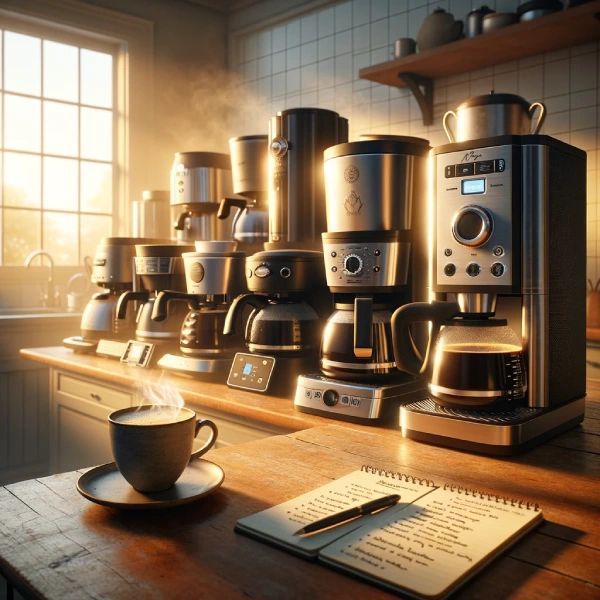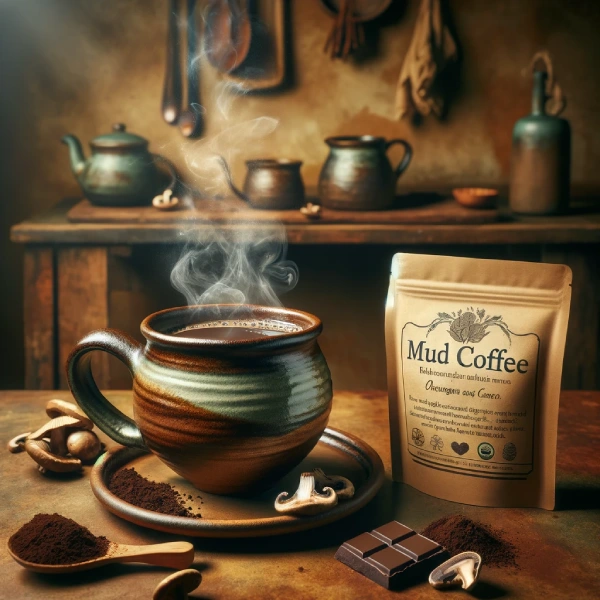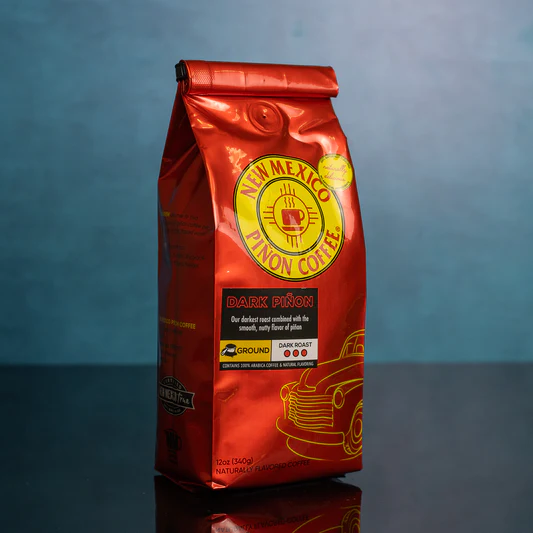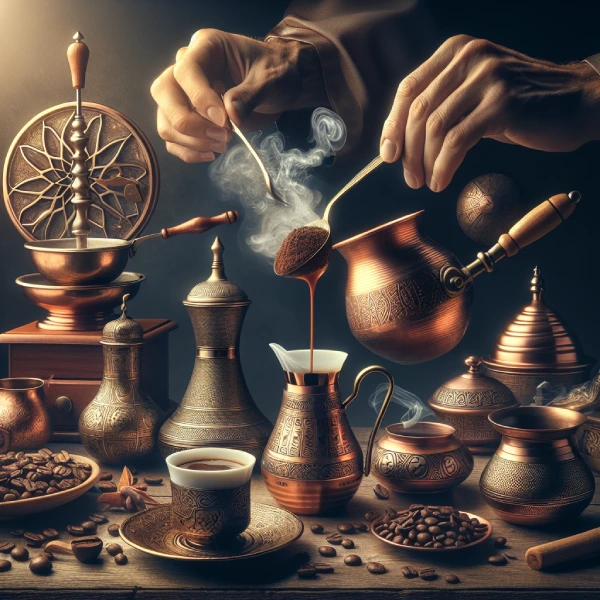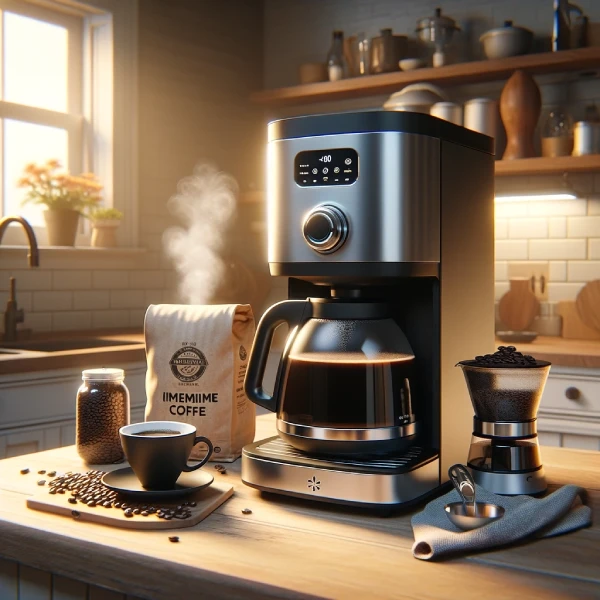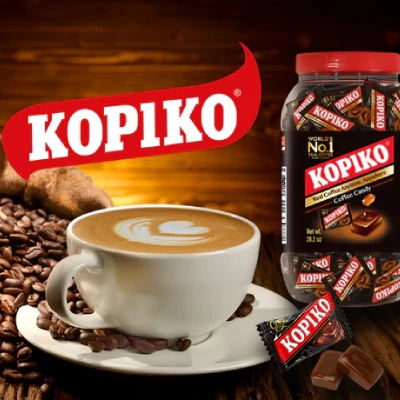Italian coffee, with its rich history and robust flavors, has long captivated the hearts of coffee enthusiasts worldwide. From the bustling streets of Rome to the serene landscapes of Tuscany, each sip of Italian coffee is a testament to a tradition steeped in passion and craftsmanship.
In this exploration, we delve into the world of Italian coffee, uncovering the secrets behind Italy's finest brands and guiding you through a sensory journey that promises to elevate your coffee experience.
Key Takeaways
- Discover the rich history and unique brewing methods of Italian coffee.
- Explore the top Italian coffee brands and their signature blends.
- Learn about different types of Italian coffee and their distinct flavors.
- Gain insights into selecting the best Italian coffee to suit your taste.
- Uncover tips for brewing the perfect cup of Italian coffee at home.
A Brief History of Italian Coffee
The story of Italian coffee begins in the 16th century, with the first coffee shops, known as “botteghe del caffe,” emerging in Venice. These establishments laid the foundation for a thriving coffee culture that would eventually become synonymous with Italian identity.
The introduction of the espresso machine in the early 20th century marked a significant milestone, revolutionizing the way Italians enjoyed their beloved beverage and cementing espresso as a national symbol.
Photo by Elesban Landero Berriozábal on Unsplash
The Best Italian Coffee Brands
Italy is home to some of the world's most renowned coffee brands, each offering a unique flavor profile that reflects the rich diversity of Italian coffee culture. Here are some of the top brands that stand out for their quality and heritage:
-
Lavazza: Founded in Turin in 1895, Lavazza is synonymous with Italian coffee. Known for its rich, full-bodied blends like Qualita Rossa and Super Crema, Lavazza represents the quintessence of Italian espresso tradition. Learn more about Lavazza's journey.
-
Illy: Hailing from Trieste, Illy has been a symbol of excellence since 1933. Its meticulously sourced beans and precise roasting process result in blends that are both intense and balanced, making Illy a favorite among connoisseurs.
-
Segafredo: This Bologna-based brand, founded in 1973, is known for its harmonious blend of Arabica and Robusta beans, offering a rich flavor with hints of chocolate and caramel.
-
Kimbo: A testament to Naples' coffee heritage, Kimbo's blends are crafted in the traditional Neapolitan style, offering a rich and creamy espresso experience.
-
Caffe Vergnano: One of the oldest Italian coffee brands, Caffe Vergnano, founded in 1882, is celebrated for its smooth, balanced blends with notes of fruit and chocolate.
-
Sant’Eustachio: This artisanal roaster from Rome, established in 1938, is renowned for its signature espresso blend, known for its thick, creamy crema and complex flavor profile. Experience the taste of Sant’Eustachio.
-
Danesi: Another Roman gem, Danesi has been crafting high-quality coffee since 1905, with blends that are both rich and nuanced.
-
Pellini: From Verona, Pellini's focus on high-quality Arabica beans results in smooth, aromatic coffees that are a delight to the senses.
-
Mokaflor: This Florence-based artisanal roaster, established in 1950, is known for its rich, full-bodied blends with a hint of sweetness.
Different Types of Italian Coffee
Italian coffee culture offers a variety of coffee drinks, each with its unique preparation and taste:
- Espresso: The cornerstone of Italian coffee, espresso is a concentrated brew known for its rich flavor and intensity.
- Cappuccino: A breakfast favorite, cappuccino combines espresso, steamed milk, and frothed milk, often topped with cocoa powder.
- Macchiato: A small espresso "stained" with a dollop of steamed milk, offering a stronger taste in a smaller serving.
- Latte Macchiato: A layered drink with steamed milk poured over a shot of espresso, resulting in a milder flavor with more milk than espresso.
- Marocchino: Originating from Piedmont, this strong coffee is served in a glass with cocoa powder and milk foam, offering a unique and flavorful experience.
Tips for Choosing the Best Italian Coffee
Selecting the right Italian coffee brand involves considering your taste preferences, brewing method, and the quality of the beans. Here are some tips to guide your choice:
- Brewing Method: Choose a brand that complements your preferred brewing method, whether it's an espresso machine, Moka pot, or French press.
- Roast Level: Italian brands offer a range of roasts from light to dark. Select according to your taste preference.
- Bean Quality: Opt for brands that use high-quality beans, such as Arabica or Robusta, for the best flavor.
- Freshness: Look for brands that provide a roast date and ensure you're getting fresh beans for maximum flavor.
- Storage: Properly store your coffee in a cool, dry place to preserve its freshness and aroma.
Brewing the Perfect Cup of Italian Coffee at Home
To recreate the authentic Italian coffee experience at home, follow these steps:
- Select Quality Beans: Choose a high-quality Italian coffee brand that suits your taste.
- Grind Fresh: For the best flavor, grind your beans just before brewing.
- Water Temperature: Use water just off the boil (around 195°F to 205°F) for optimal extraction.
- Brewing Method: Whether using an espresso machine, Moka pot, or other methods, follow the specific instructions for each to achieve the best results.
- Serving: Serve immediately to enjoy the full flavor and aroma of your freshly brewed Italian coffee.
Mastering the Art of Italian Coffee Brewing: A Comprehensive Guide
Continuing our journey into the enchanting world of Italian coffee, we now turn our focus to the art of brewing. Italian coffee is not just about the beans or the brands; it's an experience that extends into the very process of making the coffee.
In this part, we will explore various Italian coffee brewing methods, each offering a unique way to savor the rich flavors and aromas of Italy's finest coffees. Whether you're a seasoned barista or a home enthusiast, these insights will help you master the art of Italian coffee brewing.
Brewing Italian Coffee: Methods and Mastery
1. The Moka Pot: Italy's Iconic Brewer
The Moka Pot, often associated with the Bialetti brand, is a stovetop coffee maker that uses pressure extraction, similar to an espresso machine. This method is revered for producing coffee that is steamy, thick, and rich in flavor.
The process involves boiling water in the base, which then passes through a basket of coffee grounds, resulting in a robust and aromatic brew. Discover the classic Moka Pot brewing technique.
2. The Espresso Machine: The Heart of Italian Coffee
Espresso machines, whether professional or home models, are central to Italian coffee culture. They work by forcing nearly boiling water through finely-ground coffee beans, creating a concentrated and flavorful shot of espresso.
This method is known for its speed and efficiency, producing a rich and creamy coffee that forms the base for many other Italian coffee drinks.
3. The French Press: A Simple Yet Elegant Method
The French Press offers a straightforward approach to brewing coffee. It involves steeping coarsely ground coffee in hot water, then pressing the grounds to the bottom to separate them from the liquid.
This method yields a smooth and full-bodied cup of coffee, with a depth of flavor that is both rich and nuanced.
4. The Pour-Over: For the Coffee Purists
Pour-over brewing involves pouring hot water over coffee grounds in a filter, allowing the water to drip through into a carafe or cup. This method is praised for its ability to highlight the subtle flavors and aromas of the coffee, offering a clean and balanced cup. It requires precision and patience but rewards with an exceptional coffee experience.
5. The AeroPress: A Modern Twist on Traditional Brewing
The AeroPress is a relatively new addition to the coffee world, but it has quickly gained popularity for its versatility and ease of use. It combines elements of espresso and French press brewing, producing a cup that is rich, smooth, and low in bitterness. The AeroPress is particularly favored for its portability and quick brewing time, making it an excellent choice for coffee lovers on the go.
The Cultural Significance of Italian Coffee Brewing
Italian coffee brewing is more than just a method; it's a ritual that embodies the Italian way of life. It's about taking the time to savor the moment, whether it's a quick espresso at the bar or a leisurely Moka pot brew at home.
Each method has its own story, its own tradition, and its own place in the rich tapestry of Italian culture.
The Social Aspect of Coffee in Italy
In Italy, coffee is as much about social interaction as it is about the drink itself. Cafes and coffee bars are hubs of community life, where people gather to chat, relax, and of course, enjoy great coffee. The act of brewing and sharing coffee is a way to connect, to share stories, and to create memories.
Sustainability and Innovation in Italian Coffee Brewing
As the world becomes more conscious of environmental issues, Italian coffee culture is also evolving. There is a growing emphasis on sustainability, from ethically sourced beans to eco-friendly brewing methods. Innovations like the AeroPress reflect this shift, offering a more sustainable alternative to traditional brewing methods.
Conclusion: Embracing the Italian Coffee Tradition
Embracing the Italian coffee tradition means more than just drinking coffee; it's about immersing yourself in a culture that values quality, tradition, and community. Whether you prefer the classic Moka pot or the modern AeroPress, each brewing method offers a unique window into the soul of Italian coffee.
By mastering these methods, you not only enhance your coffee experience but also connect with a centuries-old tradition that is as vibrant and dynamic as Italy itself.
FAQs: Your Guide to Italian Coffee Brewing
1. What is the best method for brewing Italian coffee at home?
The best method depends on your taste preferences and the equipment you have. The Moka pot is a classic choice for a strong, rich brew, while the AeroPress offers a quick and smooth cup.
2. How do I choose the right coffee beans for Italian brewing methods?
Select beans that are freshly roasted and ground to suit your brewing method. For espresso and Moka pot, a fine grind is ideal, while a coarser grind works best for French press and AeroPress.
3. Can I use regular coffee beans for espresso?
While you can use any coffee beans for espresso, beans specifically roasted for espresso will yield the best results, as they are typically roasted longer to bring out a richer, more robust flavor.
4. How important is the water temperature in brewing Italian coffee?
Water temperature is crucial for optimal extraction. For most brewing methods, water just below boiling (around 195°F to 205°F) is ideal.
5. What is the key to making a perfect espresso?
The key to a perfect espresso lies in the quality of the beans, the fineness of the grind, the tamping pressure, and the water temperature. A good espresso machine and practice are also essential.




